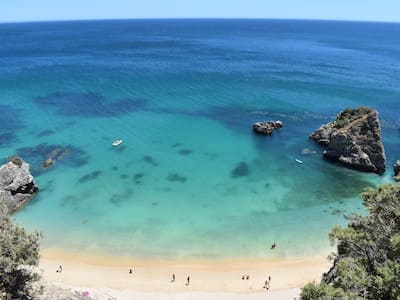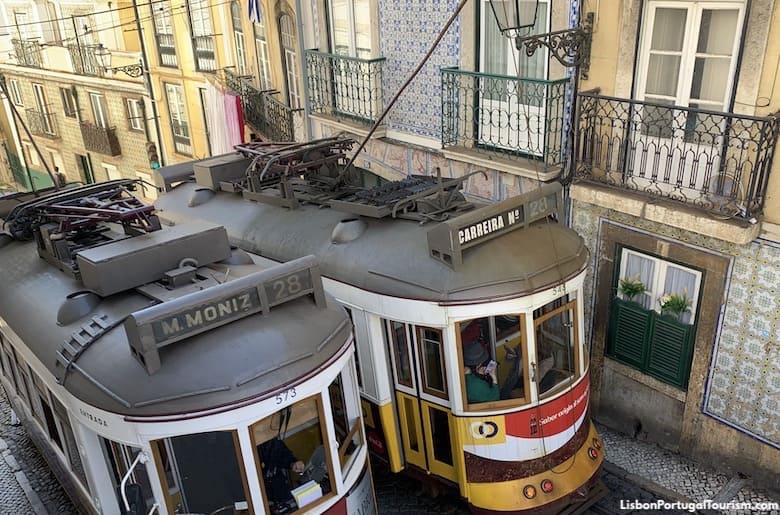
Tram 28 in Alfama, on its way up the hill towards the neighborhood of Graça
Riding Lisbon's trams can be either a charming or a nerve-wracking experience. That depends on whether you get a seat or have to stand, packed like a sardine in a can. It is also not the best form of transportation when you're in a hurry, as double-parked cars often slow down the journey. Still, no visit to Lisbon is complete without a ride on these old marvels, which remain the only way to navigate the narrow streets of the hilly districts. They've been in operation since 1901, and all of them (except modern tram 15) still have their original wood paneling. They start their day between 6am and 7am, and most continue until late at night. At major stops, there are digital information boards indicating how much time is left until the next tram.
It’s important to remember that on the old trams, passengers board through the front door (by the driver), while on the modern tram 15, any door may be used. Passengers with the prepaid travel cards have to validate them by tapping them on the reader behind the driver.
These are the six tram routes in Lisbon:
Tram 12
A route starting in Martim Moniz, up to Miradouro das Portas do Sol, passing by the cathedral and ending in Praça Luís de Camões, by Bairro Alto.
See the tram 12 guide.
Tram 15
From Rua da Prata (by Praça da Figueira) it goes to Praça do Comércio and continues down the waterfront, passing by Cais do Sodré, Avenida 24 de Julho, and Belém. It’s the most popular way to go from central Lisbon to Belém (although the train that departs from Cais do Sodré is really faster, more comfortable and more recommended).
See the tram 15 guide.
Tram 18
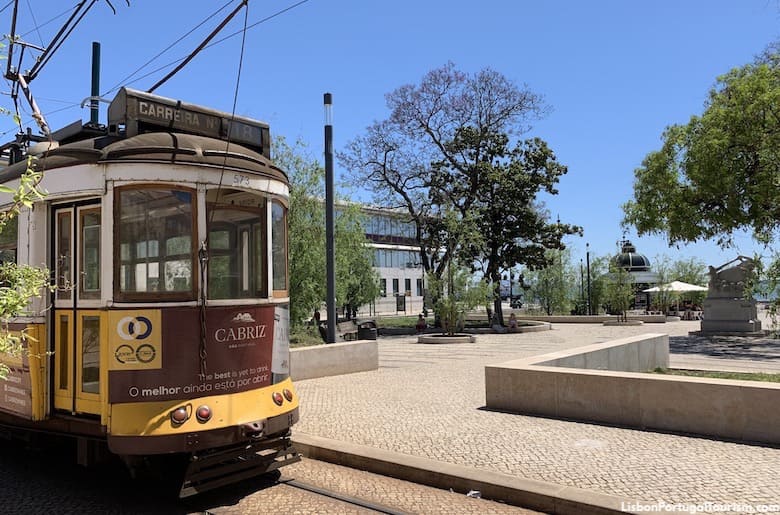
From the stop next to Cais do Sodré train station (pictured above), it goes down the waterfront, past Avenida 24 de Julho, to Ajuda, on the hill above Belém. It departs three times per hour (roughly every 22 minutes), and takes about 25 minutes to reach the stop by Ajuda Palace. Note that it does not operate on Sundays or public holidays.
Tram 24
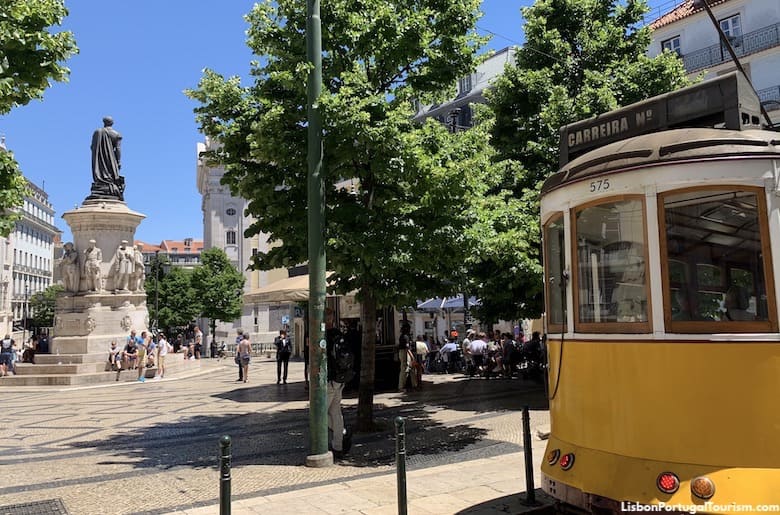
From Praça Luís de Camões in Chiado, it goes up the hill towards São Roque Church and the São Pedro de Alcântara viewpoint in Bairro Alto and Príncipe Real, and ends a short walk from the Amoreiras shopping mall.
See the tram 24 guide.
Tram 25
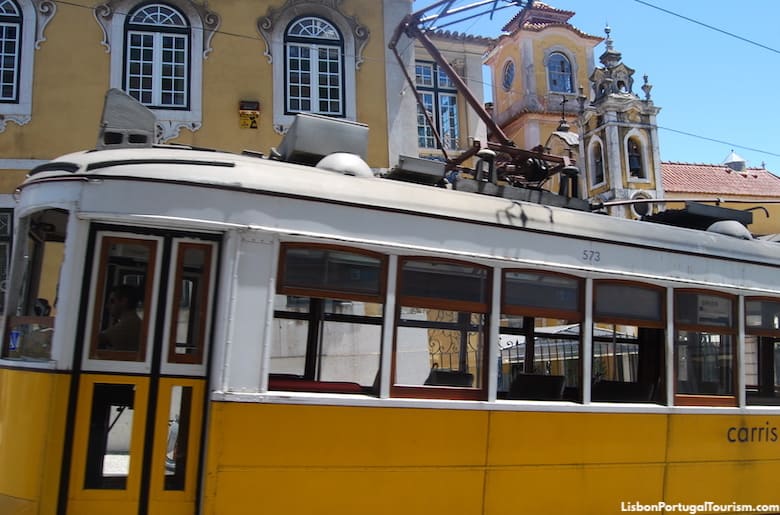
Operating only on weekdays, it departs from Praça da Figueira (every 15 to 20 minutes), passes by Praça do Comércio, goes through Santos (down the street from the Ancient Art Museum), up to Basílica da Estrela and Campo de Ourique. It takes about a half hour to complete its journey.
Tram 28
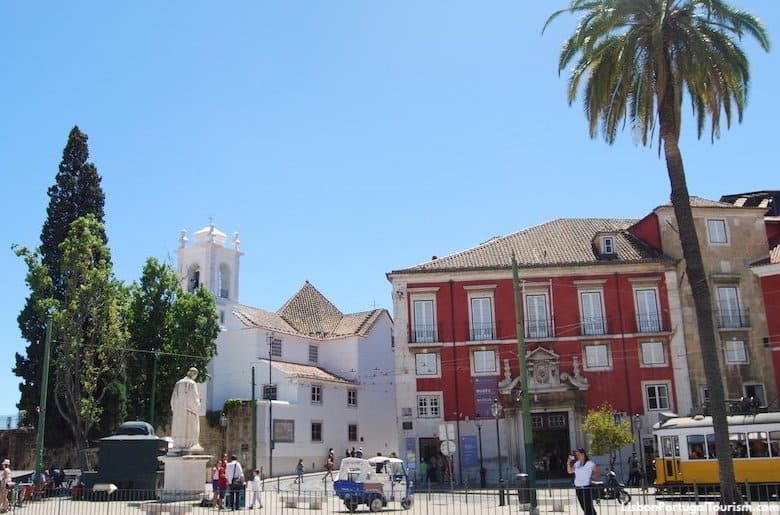
This unofficial tourist line has the most picturesque route. It goes through the narrow streets of Alfama, past the cathedral, up to Chiado and Basílica da Estrela. With the Lisboa Card you can always hop on and off at the various stops for free. However, nowadays it is just way too crowded to make it a comfortable sightseeing experience.
See the tram 28 guide.
Tram Tickets and Prices
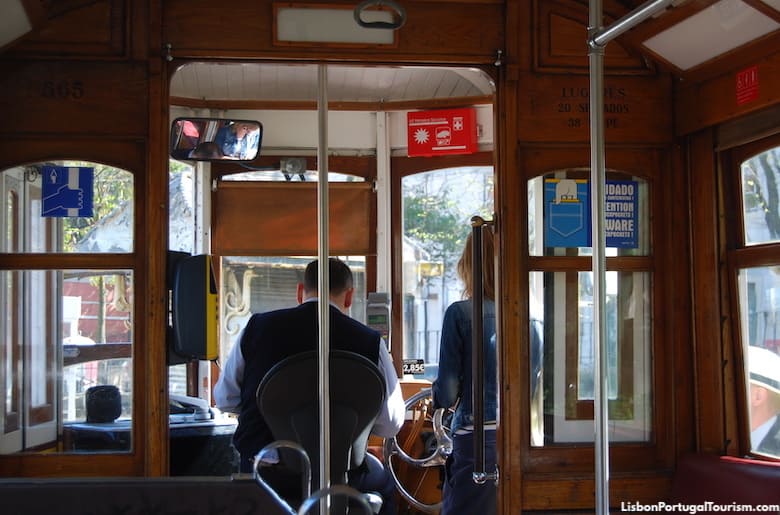
Tram tickets are €3.20 for single journeys, and are bought directly from the driver in cash, or from the machine by tapping a debit card as you enter (except in the case of the modern tram 15, where you buy them from a machine inside). Yes, it’s a little expensive, but most locals use their monthly passes and many tourists use the tourist pass (the Lisboa Card), so the price is meant to discourage those without passes from riding — a lot of time used to be wasted in the buying of tickets, preventing the trams from completing their journeys on time. If you plan to take the trams (or any public transportation in Lisbon), save time and money by getting the Lisboa Card. This card also has the major advantage of offering free or reduced admission to most of the city’s attractions. Alternatively, there’s the 24-hour public transportation card (the Navegante), which can be bought at any metro station. The card costs €0.50, and the 24-hour fare charged on it is €7.00. That includes rides on the trams, metro, funiculars, and buses within Lisbon.
Pickpockets on the trams

The crowded trams are the perfect targets of pickpockets. Trams 28 and 15 have the most reported cases, but the usual precautions and common sense should be applied in any form of transportation in any tourist destination.
It should be noted that most pickpockets are from Eastern Europe, and often dress like tourists (even carrying maps and cameras), so there’s no way you can spot one. Victims are usually the more careless tourists -- it’s recommended that if you stand on the trams, wear your backpack in the front, place your wallet in a front pocket and cover it with your hand. Pickpocketing is never a violent act -- victims often just notice their valuables are gone minutes after the theft. To report such an occurrence, head to the tourist police in Praça dos Restauradores.


